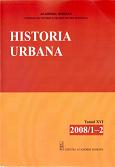Ideea dinastică şi identitate naţională în Imperiul Austro-Ungar 1880-1918. Expresii ale artei publice
Dynastic Loyalty and National Identity in the Austrian-Hungarian Monarchy 1880–1918. Expressions of Public Art
Author(s): Teodora BonţeanuSubject(s): History
Published by: Editura Academiei Române
Keywords: Austria-Hungary; dynasty; art; monuments; political mythology; ethnic minorities; elites; national ideas; towns;
Summary/Abstract: The aim of the current study is a general analysis of the dynastic myth and the national response portrayed in monumental art: painting, sculpture and architecture in Austria-Hungary from 1880 to the First World War. Aiming the creation and dissemination of an “over-national” form of loyalty, the Habsburg dynasty used a certain political mythology, including figures of kings, queens and generals, emblems of dynastic loyalism. The national response of the ethnic minorities varied in intensity; while some ethnic groups benefited from a large autonomy and had strong cultural elites (as did the Czechs and the Polish), others, as is the case with all nations belonging to the eastern part of the monarchy, were submitted to an intensive program of magyarization and had few opportunities to manifest their political mythology in public art. The political class, state institutions and cultural elites took upon themselves to honor the memory of key characters of historical tradition, thus playing an important role in transmitting national ideas. The major towns in the monarchy, such as Vienna, Budapest, Lemberg, Prague, were used as a stage of an elaborate “mise en scène” as dynastic loyalism confronted itself with national ideals. Eventually, most of these monuments were destroyed after the First World War, as they had lost their significance in the newly created states of Central and Eastern Europe.
Journal: Historia Urbana
- Issue Year: XVI/2008
- Issue No: 1+2
- Page Range: 215-250
- Page Count: 36
- Language: Romanian
- Content File-PDF

